We met Nozomi on an early morning when she helped her patients with hand therapy exercises to improve their daily activities. We felt the doctor’s great sympathy for her patients after having a short conversation with her.
Nozomi has nine years’ experience in the Kokura rehabilitation hospital in Japan and has used a number of advanced physiotherapy methods on Vietnamese patients.
More than two years of working in Vietnam gave Nozomi plenty of experience in a new environment.
According to Nozomi, Vietnamese patients often get help from their families after treatment so they recover more slowly than Japanese patients, who do their personal tasks themselves. “I always encourage the patients to try to do their own daily activities for a speedier recovery,” said Nozomi.
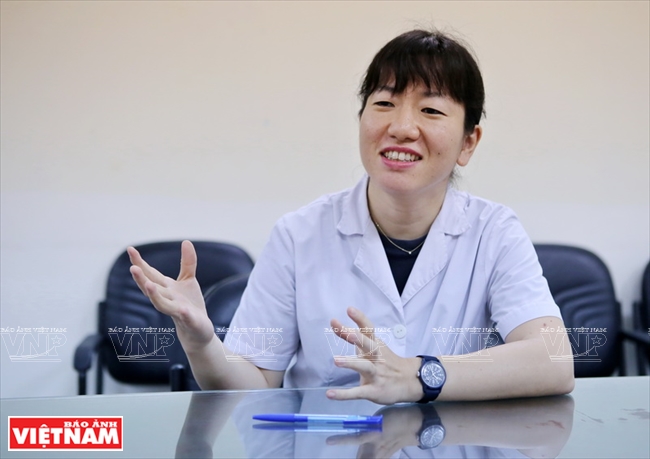
Doctor Nozomi came to Vietnam in 2016 to work in the Rehabilitation Center of Bach Mai Hospital in Hanoi as a Japan International Cooperation Agency (JICA) volunteer.
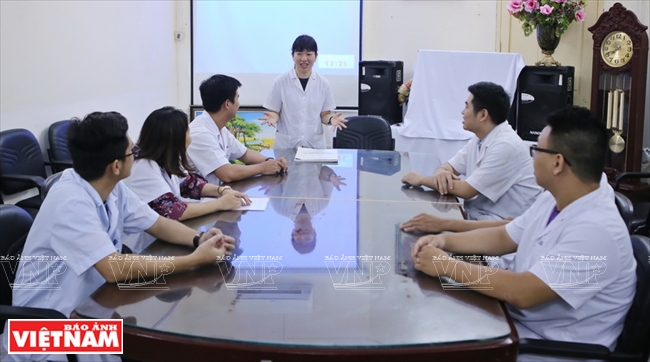
Soejima Nozomi works with the doctors and nurses of the Rehabilitation Center of Bach Mai Hospital.
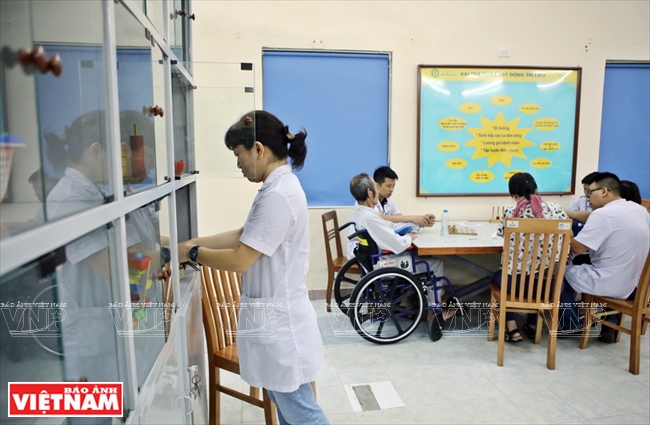
Doctor Nozomi brings her own special tools for rehabilitation activities.
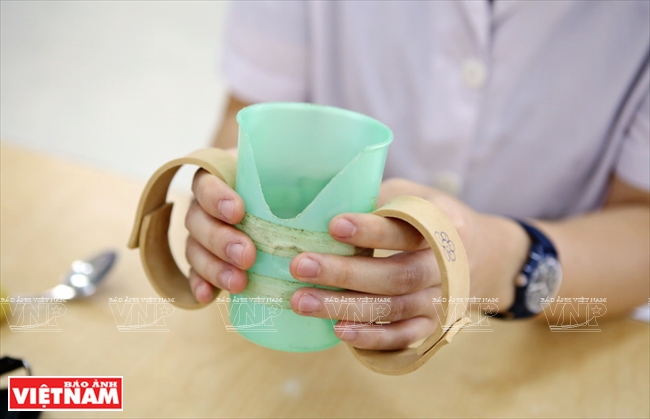
A specially designed cup for the patients.

Spoons, chopsticks and daily objects are specially designed for rehabilitation activities.
|
Although the muscle recovery exercises are simple to perform, they are very effective in restoring the patients’ brain areas that involve movement, especially for those who had strokes or spinal cord injuries. The continuous implementation of these exercises helps patients accomplish their daily activities such as dressing, brushing teeth, combing hair and eating. “Every little progress of the patient is a great joy to me,” said Nozomi.
Doctor Nozomi has made test charts to assess the level of functional rehabilitation of patients. After one month of hospital treatment, positive rehabilitation is defined as “the patient gets 90% of the defined criteria”. According to Nozomi, this level should correspond to the patients’ progress in awareness and implementation of daily personal activities.
“Soejima Nozomi is very friendly. After treatment, she explained the exercises for my son to practice at home. He quickly recovered after receiving treatment”, said Nguyen Thi Thuy, mother of Nguyen Huu Tuan, a nine-year-old boy who had a nerve in his right hand cut by a piece of glass in an accident.
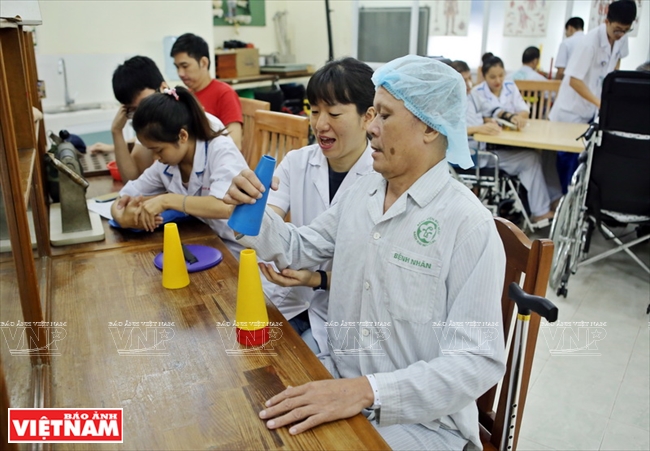
Teaching the patients to do hand exercises.
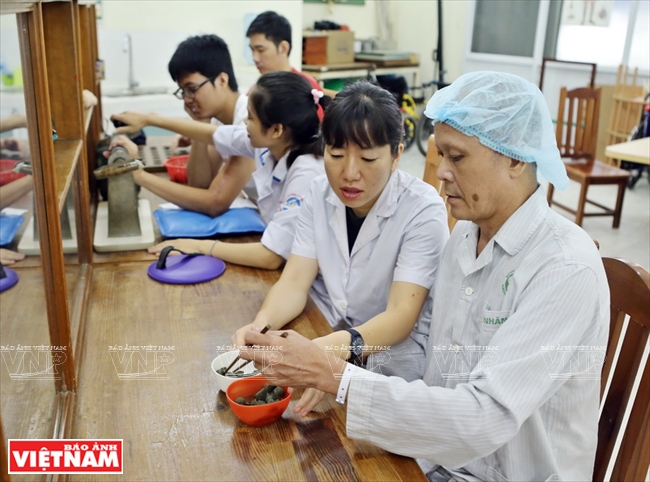
Helping the patients to use chopsticks.
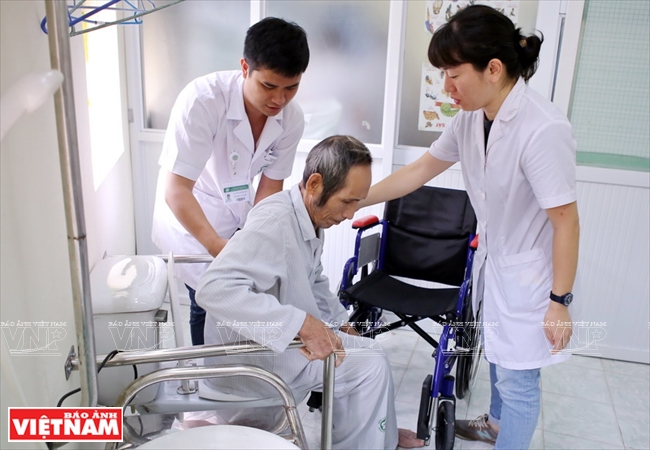
The patients practice their daily personal care.

Helping her patients to do a cognitive assessment test.

Soejima is very friendly to her patients.
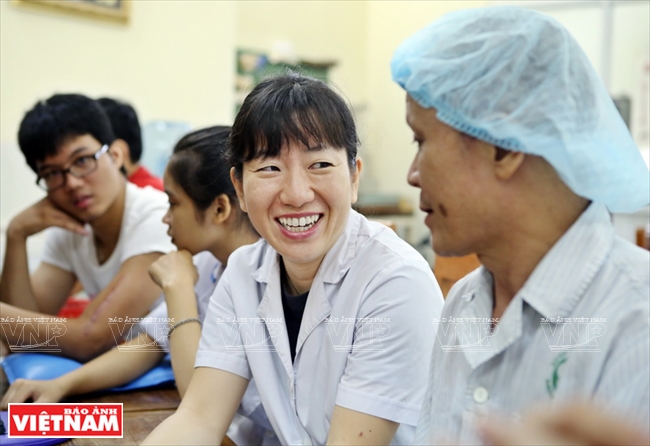
Nozomi has applied a number of advanced physiotherapy methods to Vietnamese patients.
|
Nguyen Thanh Nam, one of Soejima’s co-workers, said Soejima had contributed a lot to the treatment of the patients and helped the practitioners of the center a great deal. Her knowledge and experience have helped diversify rehabilitation therapies at the center.
Soejima Nozomi said that after receiving treatment, her patients tried to meet with her and offered her fruit to thank her, which touched her. "After two years of working here, I can speak Vietnamese better though it is difficult to learn this language. My short trips around Vietnam help me learn about your country and I feel closer to Hanoi"./.